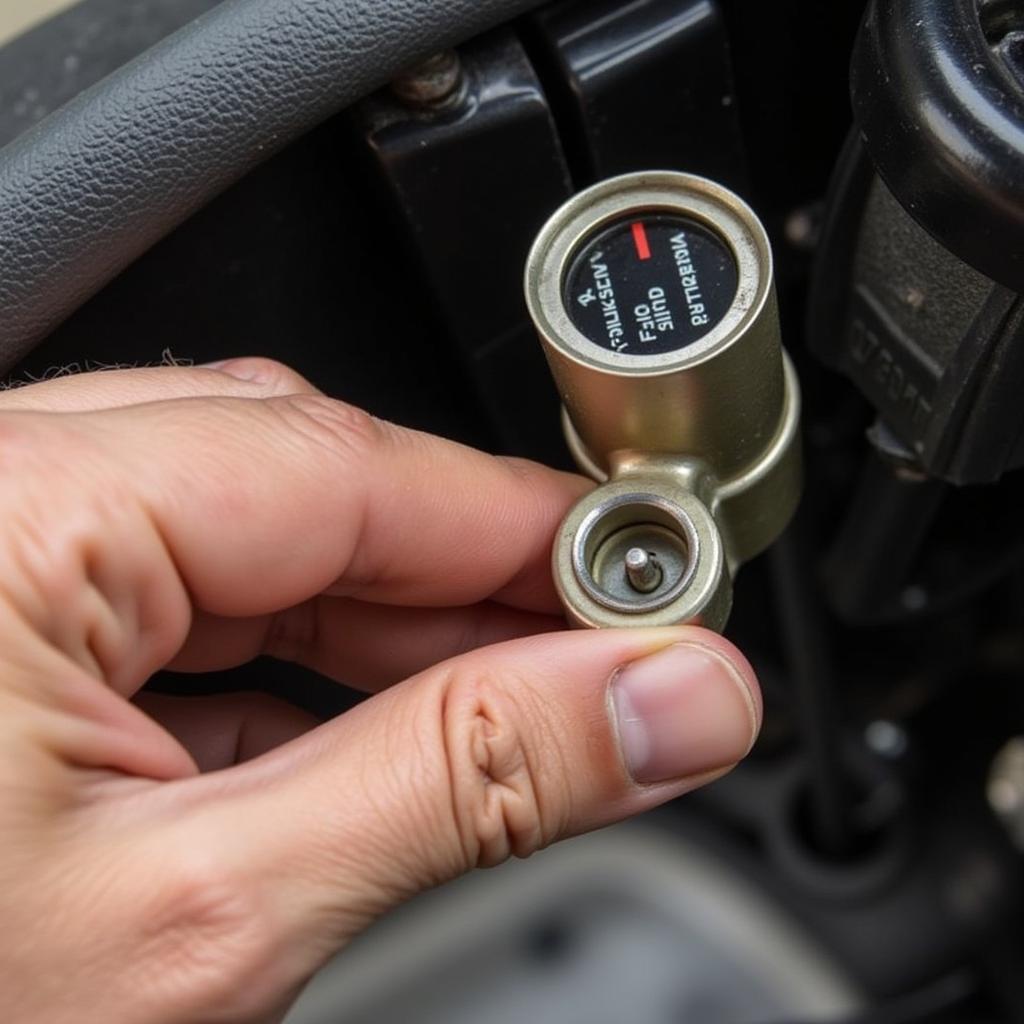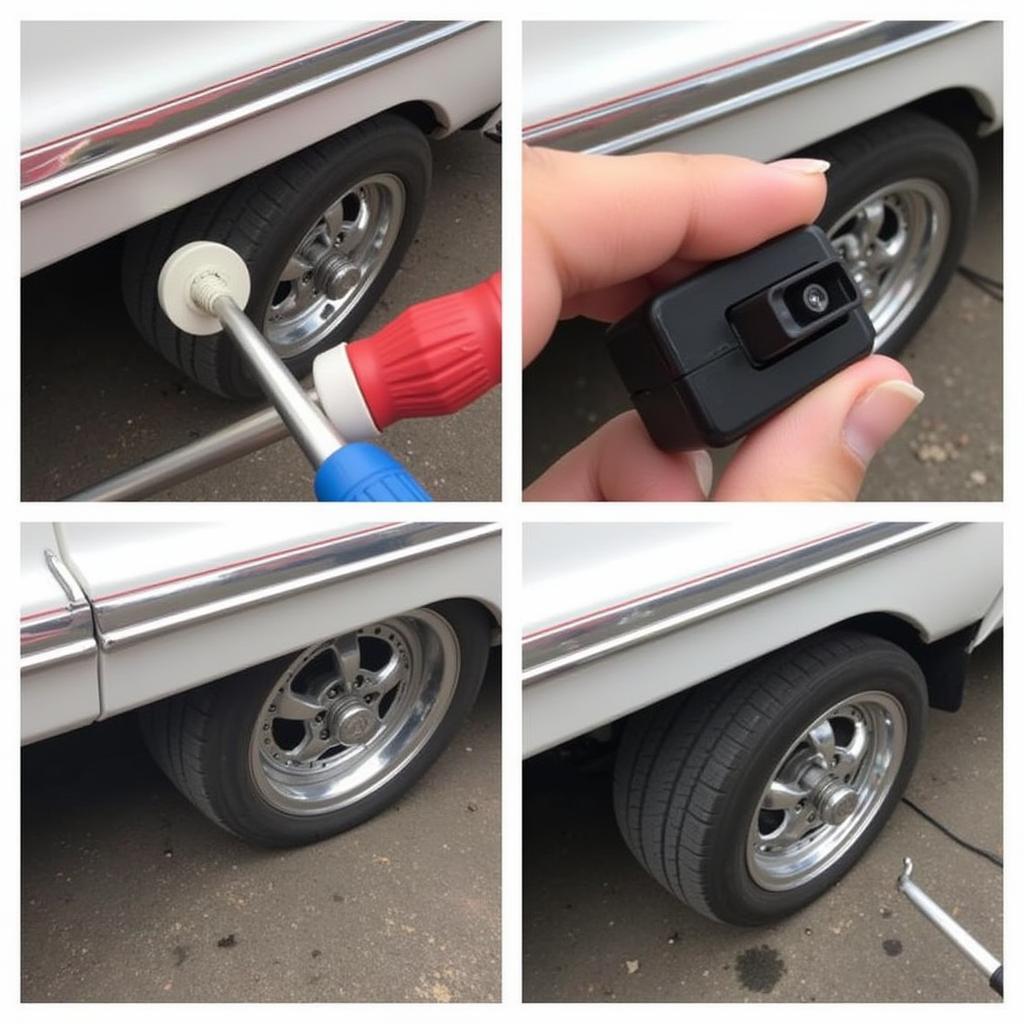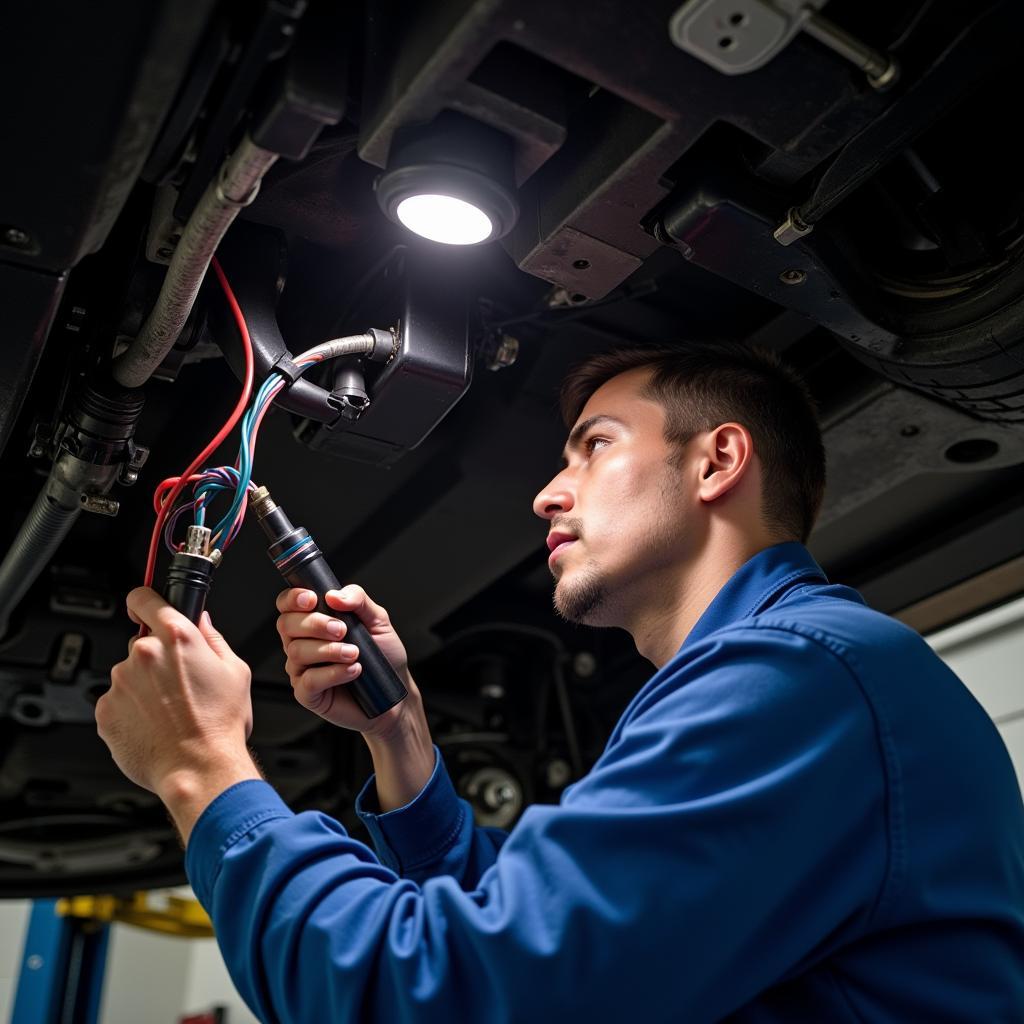The dreaded emergency brake warning light on your classic ’65 Impala can be a real head-scratcher. This article will delve into the common causes of this issue, providing you with the knowledge and steps to diagnose and fix it, getting you back on the road in your stylish ride.
Understanding the Emergency Brake Warning Light in a ’65 Impala
The emergency brake warning light serves as a crucial safety feature, alerting you if the parking brake is engaged or if there’s a potential issue within the braking system. Ignoring this light could lead to premature brake wear, overheating, or even a dangerous driving situation. So, when that light illuminates on your ’65 Impala’s dash, it’s time to take action.
Common Causes of the 65 Impala Emergency Brake Warning Light
There are several reasons why your ’65 Impala’s emergency brake warning light might be on. Often, it’s a simple fix, but sometimes it can indicate a more serious problem. Let’s explore some of the most frequent culprits:
- Engaged Parking Brake: The most obvious reason is simply that the parking brake is partially or fully engaged. Make sure to fully disengage the brake lever and check if the light goes off.
- Low Brake Fluid: Low brake fluid is a common cause and can indicate a leak in the brake lines or a worn-out master cylinder. Check your brake fluid reservoir and top it off if necessary. If the level continues to drop, you’ll need to investigate further for leaks.
- Faulty Brake Light Switch: The brake light switch is connected to the emergency brake system and can sometimes malfunction, triggering the warning light even when the parking brake is disengaged.
- Worn Brake Shoes/Pads: While less common with drum brakes like those on a ’65 Impala, worn brake shoes can sometimes activate the warning light. This is more likely if the shoes are worn unevenly.
- Damaged Wiring: Over time, the wiring connected to the emergency brake system can become damaged or corroded, leading to a false signal to the warning light.
Diagnosing the Problem: A Step-by-Step Guide
Here’s a systematic approach to help you pinpoint the cause of the illuminated emergency brake warning light:
- Check the Parking Brake: Ensure the parking brake is fully released. Sometimes, it might seem disengaged, but a slight catch can still trigger the light.
- Inspect Brake Fluid Level: Locate the brake fluid reservoir under the hood and check the fluid level. If it’s low, top it off with the correct type of brake fluid.
- Test the Brake Light Switch: Locate the brake light switch, usually mounted above the brake pedal. Test the switch with a multimeter to see if it’s functioning correctly.
- Inspect Brake Shoes: If you suspect worn brake shoes, you’ll need to remove the drum brakes to inspect them. Look for uneven wear or excessive thinning.
 Checking Brake Fluid in a 65 Impala
Checking Brake Fluid in a 65 Impala
Fixing the 65 Impala Emergency Brake Warning Light
Once you’ve identified the cause, the fix can range from simple to more complex:
- Adding Brake Fluid: If the fluid is low, topping it off is a straightforward fix. However, remember to investigate any potential leaks.
- Replacing the Brake Light Switch: Replacing a faulty brake light switch is usually a relatively easy and inexpensive repair.
- Replacing Brake Shoes/Pads: Replacing worn brake shoes requires removing the drum brakes and installing new ones. This might be a job best left to a professional if you’re not comfortable working on brakes.
- Repairing Wiring: Damaged wiring may require tracing the wires to find the break or corrosion and then repairing or replacing the affected section.
“Remember, a properly functioning brake system is vital for your safety,” says classic car expert, Richard “Richie” Spanner. “Don’t hesitate to consult a professional if you’re unsure about any aspect of the repair process.”
 Replacing the Brake Light Switch on a 65 Impala
Replacing the Brake Light Switch on a 65 Impala
Conclusion
The emergency brake warning light in your ’65 Impala is an essential safety indicator. By understanding its potential causes and following the diagnostic steps outlined above, you can effectively address the issue and ensure your classic car’s braking system is in optimal condition. Don’t ignore the warning light – address it promptly for a safe and enjoyable driving experience.
FAQs
- Can I drive my ’65 Impala with the emergency brake warning light on? It’s not recommended. While you might be able to drive, it could indicate a serious problem that could worsen and compromise your safety.
- How often should I check my brake fluid? It’s a good idea to check your brake fluid level at least once a month, or every time you check your other fluids.
- Is it difficult to replace a brake light switch? It’s usually a straightforward process, but it can vary depending on the vehicle. Consult a repair manual or a mechanic if you’re unsure.
- What type of brake fluid should I use in my ’65 Impala? Check your owner’s manual for the recommended type of brake fluid. Using the incorrect type can damage your braking system.
- How much does it cost to replace brake shoes on a ’65 Impala? The cost will vary depending on whether you do it yourself or have a mechanic do it. Parts and labor costs can differ based on your location.
- What should I do if I’ve topped off the brake fluid and the light is still on? This indicates a more serious issue, likely a leak or a problem with the braking system itself. It’s best to have a professional mechanic diagnose the problem.
- Could a bad ground connection cause the emergency brake warning light to come on? Yes, a poor ground connection in the braking system can sometimes cause the warning light to illuminate. Check for loose or corroded ground wires.
“Regular maintenance and prompt attention to warning lights are essential for keeping your classic car running smoothly and safely for years to come,” adds Richie Spanner.


